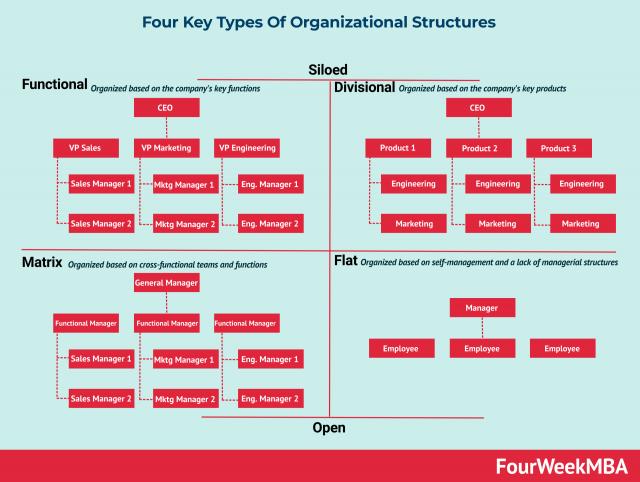The Organizational Health Index is designed to give organizations a clear, comprehensive picture of their current effectiveness and areas for improvement. It goes beyond traditional performance metrics to evaluate aspects like culture, internal alignment, execution, and capacity for renewal. The purpose of the OHI is to diagnose organizational problems and enhance capabilities that drive sustainable growth and performance. It is applicable to a wide range of industries and is tailored to fit different organizational sizes and stages of development.
Principal Concepts
- Health Metrics: Measures of organizational qualities that contribute to capacity for adaptation, execution, and long-term potential.
- Alignment: The degree to which an organization’s elements (strategy, culture, leadership, etc.) are consistent and supportive of each other.
- Execution: The ability of an organization to effectively implement its plans and achieve goals.
- Renewal: The capacity of an organization to innovate and respond to changes in the environment.
Theoretical Foundations of Organizational Health Index
The OHI is based on several management and organizational theories:
- Systems Theory: Views an organization as a complex system of interrelated parts, emphasizing the importance of system health and alignment.
- Change Management: Incorporates principles of effective change management, highlighting the need for continuous adaptation and growth.
Methods and Techniques in Organizational Health Index
Implementing the OHI typically involves a structured approach:
- Surveys and Assessments: Comprehensive surveys administered to employees across all levels to gather insights on various aspects of organizational health.
- Benchmarking: Comparing an organization’s health metrics to industry standards or best practices to identify strengths and areas for improvement.
- Action Planning: Developing targeted action plans based on OHI results to address specific areas of concern and leverage strengths.
Applications of Organizational Health Index
The OHI can be applied across various organizational functions and processes:
- Strategic Planning: Assisting leaders in aligning organizational strategies with health attributes that promote long-term success.
- Performance Improvement: Identifying barriers to effective execution and areas where organizational alignment can be enhanced.
- Cultural Transformation: Guiding efforts to shift organizational culture in ways that support overall health and competitiveness.
Industries Influenced by Organizational Health Index
- Corporate Sector: Large and medium-sized enterprises use the OHI to enhance competitive advantage and market position.
- Healthcare: Hospitals and health systems apply the OHI to improve care delivery, patient satisfaction, and operational efficiency.
- Public Sector: Government agencies use it to increase transparency, efficiency, and service delivery effectiveness.
Advantages of Organizational Health Index
- Comprehensive Evaluation: Provides a holistic view of an organization’s health beyond financial or operational performance.
- Proactive Insights: Helps organizations anticipate problems and opportunities by understanding their strengths and weaknesses in depth.
- Strategic Alignment: Facilitates better alignment of strategy, culture, and operational execution.
Challenges and Considerations in Organizational Health Index
While the OHI offers significant benefits, it also presents challenges:
- Complexity: Assessing organizational health is complex and requires robust data collection and analysis capabilities.
- Subjectivity: Some aspects of organizational health are subjective and can be difficult to measure accurately.
- Change Management: Implementing changes based on OHI findings can be challenging, especially in large or entrenched organizations.
Integration with Broader Business Strategies
To maximize its effectiveness, the OHI should be integrated with an organization’s broader business strategies:
- Continuous Learning: Organizations should treat the OHI as a continuous feedback mechanism, not a one-time assessment.
- Leadership Engagement: Active involvement from top management is crucial to leverage OHI insights effectively.
- Cross-functional Teams: Creating teams from across the organization to work on addressing the insights gathered from the OHI can help ensure holistic improvements.
Future Directions in Organizational Health Index
As organizational dynamics continue to evolve, so will the approaches to measuring and improving organizational health:
- Advanced Analytics and AI: The use of AI and machine learning to analyze OHI data can provide deeper, more actionable insights.
- Integration with Employee Wellness: Expanding the concept of health to include employee well-being as a core component of organizational health.
- Global Benchmarking: As businesses become more global, benchmarking organizational health against global standards will become increasingly common.
Conclusion
The Organizational Health Index is a vital tool that provides organizations with crucial insights into their internal operations and market positioning. By focusing on the health and sustainability of organizational practices, companies can ensure they not only survive but thrive in competitive and rapidly changing environments. As we look to the future, the OHI will continue to be an essential element in guiding organizational strategies and fostering environments that promote sustained performance and growth.
Read Next: Organizational Structure.
Types of Organizational Structures
Siloed Organizational Structures
Functional
Divisional
Open Organizational Structures
Matrix
Flat
Connected Business Frameworks
Portfolio Management
Kotter’s 8-Step Change Model
Nadler-Tushman Congruence Model
McKinsey’s Seven Degrees of Freedom
Mintzberg’s 5Ps
COSO Framework
TOWS Matrix
Lewin’s Change Management
Organizational Structure Case Studies
OpenAI Organizational Structure
Airbnb Organizational Structure
Amazon Organizational Structure
Apple Organizational Structure
Coca-Cola Organizational Structure
Costco Organizational Structure

